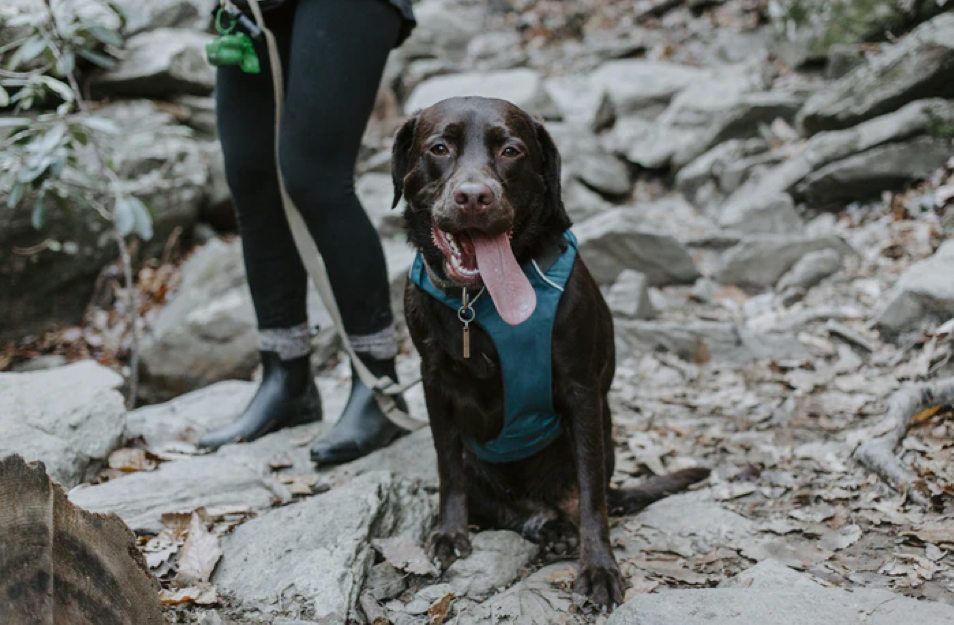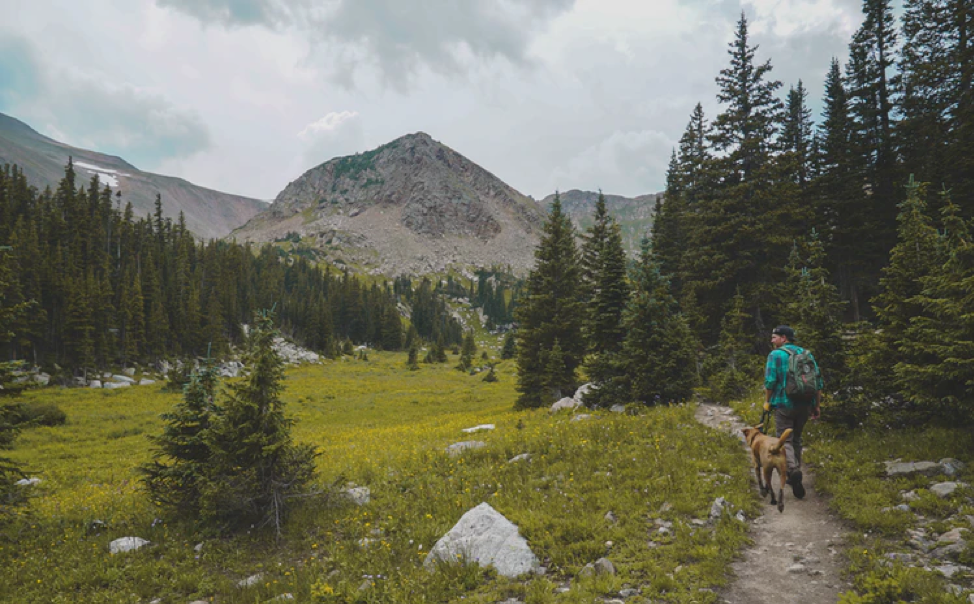Guest post by Aaron Smith
There are few things better than enjoying a beautiful walk through a state forest with man’s best friend. But the great outdoors has its share of dangers for you and your canine companion, so it’s important you come prepared.

Pack Essential Safety Accessories
There are many important items you should bring with you on a hike with your dog. You’ll want to be prepared for any injuries and obstacles you may encounter, from other playful pups to paw pad injuries and more. Here are a few items you should include on your pooch’s packing list:
Collar or Harness – A collar or harness will help identify your pup, and some come in bright colors to help others see them at a distance.
- Never use a choke collar as it could get caught on loose foliage and cause injury.
- The collar or harness should be loose enough to slip a finger underneath but not loose enough that it might slip off.
- There are even GPS collars available to keep track of your pup in case he or she slips away and gets out of sight.
Leash – Most state forests require dogs to be on a leash at all times.
- There are many types of leashes that will provide safety not only for your dog but also for other dogs who may encounter your fur baby along the walk because not all dogs are friendly.
- Having your dog on a leash will prevent running off in the excitement of exploring new scenery.
- By using a leash, you are also protecting your pup from wildlife like coyotes, skunks, and rattlesnakes.
Water – Bring along plenty of water for you and your pup. You could easily both become dehydrated on a hot day.
- Collapsible bowls are highly portable and easy to use.
- Bring at least 8 ounces of water per pup per hour of walking or hiking.
- Avoid letting your pooch drink from streams because they can carry dangerous parasites, such as Giardia.
Dog Food or Biscuits – Make sure they’re easily digested and nutritionally balanced so your dog has adequate energy.
Fruits are a good option as they are rich in fibers, water, and glucose which will also help them avoid hypoglycemia.
Bags for Dog Waste – It is imperative to bring doggie poop bags to clean waste from forest trails.
Most state and federal laws require owners to pick up dog waste because it can spread disease to wild animals and contaminate water.
Canine First Aid Kit – Make sure this kit includes a few essentials:
- Hydrogen peroxide to disinfect cuts
- Scissors with rounded tips to trim the hair around wounds
- Tweezers to remove foreign objects in wounds
- Bandages and gauze pads and an ointment to put on cuts or injuries
- A small sock or bootie to protect a wounded paw

Preserve Nature While Keeping Your Dog Safe
While on your walk, it is not only essential to keep your dog safe, but also to make an effort to preserve the nature around you. You can help keep our beautiful forests flourishing by:
- Choosing a Dog-Friendly Hiking Trail – Checking out the trail ahead of time to see if it is dog-friendly is essential.
- Staying on the Trails – This will help prevent you and your pup from potentially getting lost, as well as preventing damage to the foliage along the outskirts of the pathway.
- Keeping the Forest Clean – Picking up trash and doggie waste helps to keep the forest clean.
- Staying a Safe Distance from Wildlife – Maintain a safe distance for both you and your canine when wildlife appears.
If something does happen, there are ways to handle an emergency. Look into the terrain you plan on walking prior so you can know what to expect for you and your pup. If the ground is too difficult, especially if your dog is older, finding a different forest with a less challenging path might be a better choice.
Our state forests are beautiful places to enjoy with our furry family members. Learning more about what makes our forests so amazing can help everyone appreciate and cherish the serene locations we have come to love so much.
Aaron Smith is a writer, copy strategist, and consultant who works with several companies and non-profits. In his free time, Aaron enjoys swimming, swing dancing, sci-fi novels, and hiking with his dogs.

